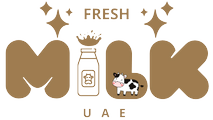Cultured butter is a natural, rich form of butter that has been fermented using specific bacterial cultures. Unlike regular butter, cultured butter undergoes a fermentation process, which gives it a tangy flavor and a creamier texture. This special type of butter is made by allowing cream to ferment for a period before being churned into butter.
Fresh cultured butter is a perfect addition to your daily meals, providing a delightful twist to your recipes. Its distinct, slightly tangy taste makes it a favorite in cooking and baking, offering a healthier alternative to regular butter.
The Health Benefits of Cultured Butter
One of the key reasons many people prefer cultured butter is its health benefits. Unlike regular butter, which is made from sweet cream, cultured butter is made from fermented cream. This fermentation process allows the beneficial probiotics from the culture to remain in the butter, contributing to digestive health.
The probiotics found in cultured butter can aid in the digestion of food, improving gut health. Additionally, it contains healthy fats and fat-soluble vitamins, such as vitamin A and D, which support overall well-being. By choosing fresh cultured butter, you are opting for a more nutritious and flavorful alternative to other types of butter.
How to Use Fresh Cultured Butter in Your Cooking
Fresh cultured butter is incredibly versatile in the kitchen. Its unique flavor makes it ideal for spreading on toast, muffins, or pancakes. You can also use it in cooking or baking, where it will add a delightful richness to your dishes.
When baking, using cultured butter can improve the texture and flavor of pastries, cakes, and cookies. It helps to create a tender crumb and a rich taste that is hard to replicate with regular butter. Additionally, the slight tang from the fermentation process can complement savory dishes like mashed potatoes, grilled vegetables, and pasta sauces.
The Difference Between Cultured Butter and Regular Butter
While both cultured butter and regular butter come from cream, their production processes are what set them apart. Regular butter is churned from sweet cream and does not undergo fermentation. On the other hand, cultured butter is made by fermenting the cream with live bacterial cultures, which give it its signature tangy flavor.
Another notable difference is the texture. Cultured butter has a smoother, creamier texture than regular butter, making it a delight to spread. Its higher fat content also contributes to its rich flavor profile, making it a better option for those who appreciate a more flavorful butter.
Why Choose Fresh Cultured Butter?
Fresh cultured butter offers more than just superior flavor and texture. It is a healthier option, packed with probiotics that support your gut health. By choosing cultured butter, you’re making a decision that benefits both your taste buds and your overall well-being.
Moreover, fresh cultured butter can be found in many natural food markets or specialty stores. It’s important to choose high-quality cultured butter made from grass-fed cows to ensure you’re getting the best taste and nutritional value.
Also Read:https://freshmilkuae.com/fresh-yogurt-in-sharjah
Conclusion
Incorporating fresh cultured butter into your diet is a simple way to enhance the flavor of your meals while benefiting from its nutritious properties. Its rich taste, combined with its health benefits, makes it an ideal choice for cooking, baking, and spreading on your favorite snacks. Whether you’re making homemade bread, cooking vegetables, or preparing a savory sauce, fresh cultured butter can take your dishes to the next level.
By switching to cultured butter, you’re not only enjoying a delicious, creamy addition to your meals, but you’re also supporting your health with the beneficial probiotics it provides.


